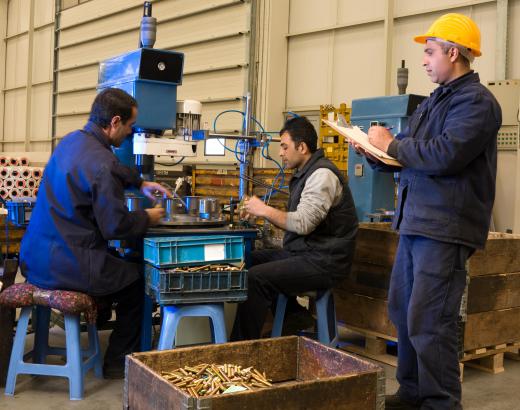A rotary table is a disc-shaped metalworking device used to obtain precise workpiece positioning. It enables a metalworker to cut or drill a workpiece at precise intervals around a vertically or horizontally fixed axis. A rotary table can be both manually or computer numerical controlled. Certain types of rotary tables are designed to be used with indexing plates or dividing plates for specialized operations. A rotary table used together with one of these positioning plates is generally referred to as a dividing or indexing head.
The rotary table device typically has a solid base that can be attached to a separate fixture or table using clamps. This device is basically a rotating disc which holds the workpiece in place during cutting or drilling operations. The disc portion of a rotary table can be freely rotated for indexing procedures or turned by an attached control arm known as a worm wheel. Tables used in high precision operations are typically turned by a duplex-type worm wheel to compensate for backlash. Rotary tables used in automated metal working processes are turned by computer numerical controlled machinery.

Rotary tables are most often used in a flat position with the table’s axis having a vertical orientation. They are sometimes mounted with the axis oriented in a horizontal fashion so that a tailstock can be used to support the free end of the workpiece. When this device is attached to a secondary table, the workpiece can be centered on the rotary table’s axis which is then centered on the cutting tool’s axis. In this configuration, the axes of the rotary table, secondary table, and cutting tool are coaxial to facilitate concentric cutting operations. This configuration also permits the secondary table to be offset for drilling equidistant holes in a workpiece.
It is also a necessary component for many different types of machining and milling procedures. This versatile device can be utilized to perform specialized tasks such as machining spanner flats on bolts and drilling holes in flanges. In certain other configurations, a rotary table can also be used cut complex curves, arcs, and round pieces with protruding tangs. Rotary tables are sometimes used to produce a large-diameter hole in a workpiece by cutting in a tight circular path. This device can also used in place of a lathe when it is operated by a stepper motor combined with a computer numerical controlled milling machine and tailstock.
